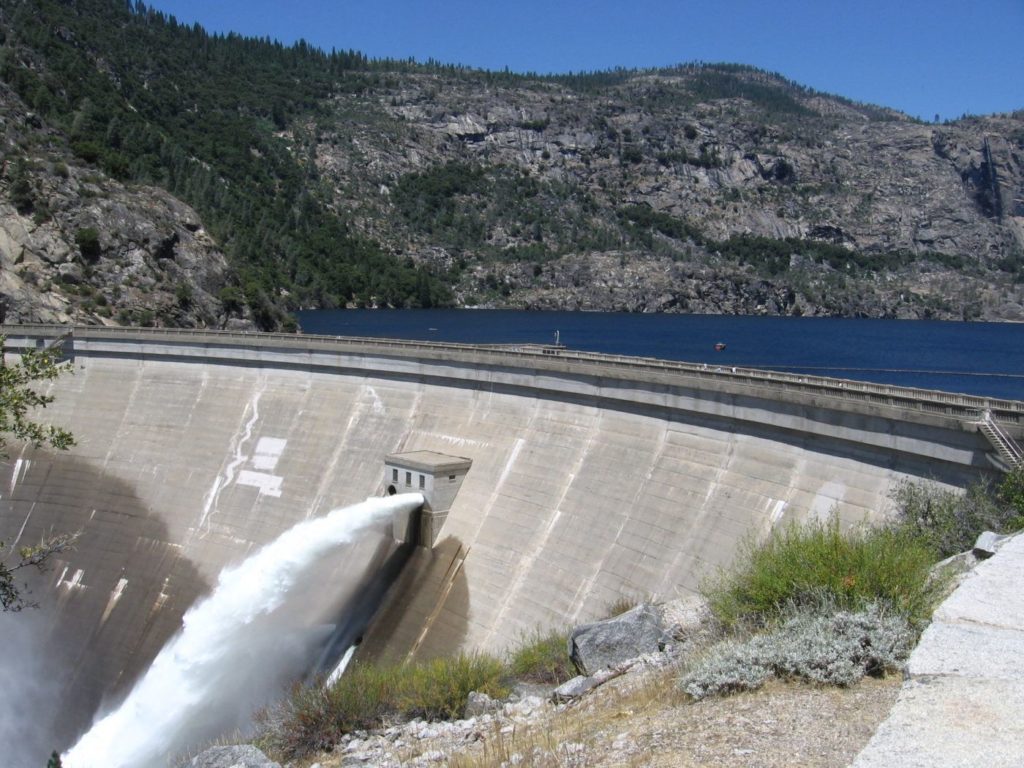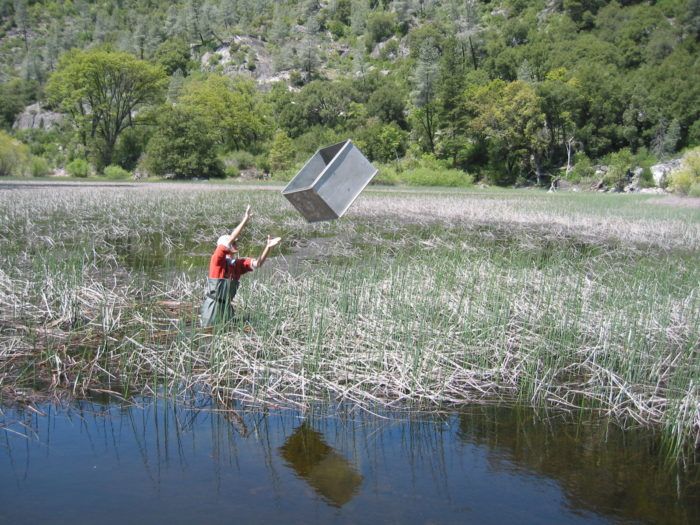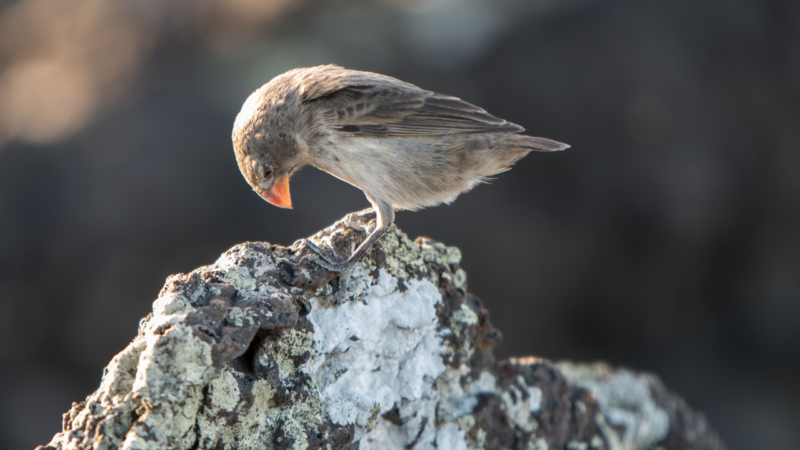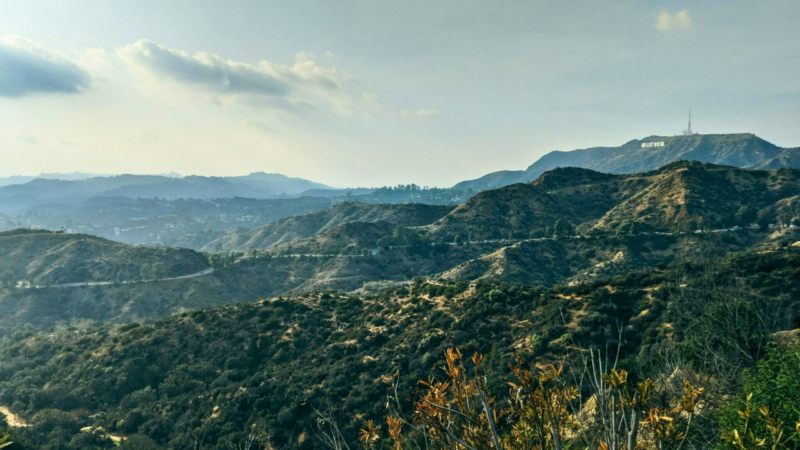
Hetch Hetchy gushes over wetlands
A different story is unfolding at Hetch Hetchy reservoir in Yosemite National Park, where water is being released to conserve and restore wildlife. In a state wracked with drought, the…
Dams are controversial among environmentalists, providing water and clean energy—but destroying and fragmenting habitat.
A different story is unfolding at Hetch Hetchy reservoir in Yosemite National Park, where water is being released to conserve and restore wildlife.
In a state wracked with drought, the Hetch Hetchy is an exception to the rule. Further west, California’s chinook salmon is battling to survive in the Sacramento River, where two dams—Keswick and Shasta—block the route to their historical breeding grounds. Plans to release water to save the chinook are unpopular. In anticipation of this year’s big snow melt, Central Valley farmers replanted fields that have been uncultivated because of the drought—and they don’t take kindly to fish jumping ahead in the water line.
Hetch Hetchy is unique because of its small holding capacity in comparison to the vast watershed feeding it. Not only does it supply 85 percent of the water for 2.6 million people in San Francisco, controlled releases via the O’Shaughnessy Dam are helping preserve downstream species—even in dry years. “There is water we just can’t store, so we have to release it,” says Tim Ramirez, who manages natural resources for the San Francisco Public Utilities Commission.
The current strategy is to make the best of dams by mimicking what the river would look like if they weren’t there, Ramirez says. Carefully timed spills imitate the river’s original flow. In California, especially during drought years, the releases have to be strategically tweaked.
Calculating how much water to release and when—all while retaining enough for urban needs—is a complicated forecasting operation. It gets trickier when you add in City of San Francisco’s environmental stewardship goals: To do a better job operating the dam to protect species below it and to restore species that have disappeared because of the dam’s presence.
Some fish, such as native rainbow trout, are adapted to hunker down and survive warmer water. Others, such as non-native brown trout, need cooler temperatures year-round, so releases of cold water are vital during hot summer months.
Because Hetch Hetchy and O’Shaughnessy Dam are located in a national park, the city collaborates with park staff, as well as with government and university-based scientists who work there. Together, they aim to conserve and restore as much watershed as possible.
For the first time in five years, northern California’s winter storms filled the reservoir enough for releases to mimic a normal spring melt. Jeff Holmquist, a research biologist with UCLA Institute of Environment and Sustainability, says the extra water was a boon to the local ecosystem.
“The wetlands drew a huge sigh of relief,” Holmquist said.

Holmquist has spent the past 16 years researching insects at the White Mountain Research Center in the Sierra Nevada. Flies might not always get the same love that frogs, birds and fish do, but they’re an important link in the food chain. And they need soil moisture to breed and thrive.
“We think of flies as icky when they land on our skin, but they are also the cannon fodder of the ecosystems,” Holmquist says. “The birds, the bats and other insects eat these little guys like popcorn.”
The freshly flooded wetlands created ideal breeding conditions for the foothill yellow-legged frog, a species of special concern. The frogs only breed successfully in specific conditions. There has to be just enough warm water along the edge of the river for eggs to be laid and fertilized, but there can’t be so much that they get washed downstream. With careful timing of releases, city and park hydrologists were able to replicate those conditions and maintain them for a month.
The releases gave researchers an opportunity to see how ecosystems bounce back after dry years.
“It’s amazing how species can withstand five years of drought,” Holmquist says. “Even though diversity can drop by 90 percent in dry years, as soon as the water comes back so do the bugs.”
Beyond conservation successes, San Francisco’s Ramirez says it was gratifying to deluge a drought-stricken wetland that historically floods in spring. They began releasing 1,000 cubic-feet-per-second flows in mid-April and ramped up to 6,500 cubic-feet-per-second in late May.
“The water was pouring down into the canyon. It was the first time in five years that we had water in spring that’s like a roller coaster, it’s a completely different scenario,” Ramirez says.
Californians have been buffered from the impacts of climate change because utilities such as water seem to be effortlessly provided, Ramirez says. But, he adds, the prolonged drought has made people more aware of what’s at stake.
Published:



